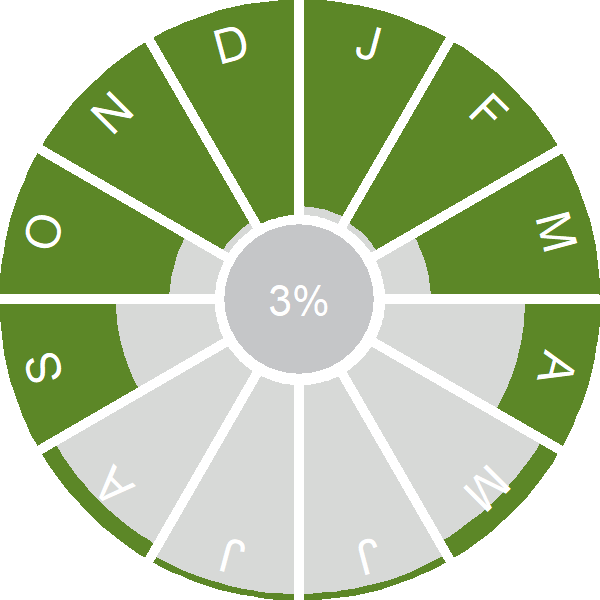Pintail

Introduction
The Pintail is an elegant duck, long-necked, long-billed and long-tailed – the last feature giving the bird its name.
Both male and female Pintail share the long, slender dark grey bill, but the male's chocolate head and neck with creamy throat stand out. Pintail are predominantly winter visitors to Britain, preferring sheltered coasts, grazing marshes and estuaries. Key concentrations are found on the estuaries of both south and north Wales, and in Lancashire, although the species can be found throughout Britain and Ireland where there is suitable winter habitat.
The Pintail is a rare and localised breeding bird, widely dispersed, but most likely to be found breeding in coastal East Anglia and the northern and western isles of Scotland. Bird Atlas 2007–11 reported fewer breeding records than the previous atlas.

Key Stats
Identification
ID Videos
This section features BTO training videos headlining this species, or featuring it as a potential confusion species.
Female dabbling ducks
Songs and Calls
Call:
Status and Trends
Conservation Status
Population Change
The Pintail has a small and very localised breeding population, monitored by the RBBP, with a five-year mean of 28 breeding pairs over the period 2015–2019, mostly in Scotland, which represents a weak decrease over the 25 years to 2019 (Eaton et al. 2021). Over the longer term, there has also been a decrease (-32%) since 1968–72, in the number of 10-km squares where breeding Atlas evidence has been recorded (Balmer et al. 2013).
Distribution
The winter distribution map reveals preferences for grazing marshes, river floodplains, sheltered coasts and estuaries while the relative abundance map confirms the importance of estuaries throughout most of Britain & Ireland for this species. The Pintail is a rare and localised breeder with clusters of records only in Orkney, North Uist, Tiree, the East Anglian coast and the Ouse Washes and isolated records elsewhere.
Occupied 10-km squares in UK
or view it on Bird Atlas Mapstore.
or view it on Bird Atlas Mapstore.
European Distribution Map
Distribution Change
Accompanying a long-term population increase there has been a 34% increase in Pintail range size in Britain in winter since the 1981–84 Winter Atlas, and notable gains include the Northern Isles and eastern fringes of the Scottish coast, with more extensive gains farther south into England and Wales.
Change in occupied 10-km squares in the UK
or view it on Bird Atlas Mapstore.
or view it on Bird Atlas Mapstore.
Seasonality
Pintails are locally common winter visitors, present from late August to May.
Weekly pattern of occurrence
The graph shows when the species is present in the UK, with taller bars indicating a higher likelihood of encountering the species in appropriate regions and habitats.

Movement
Britain & Ireland movement
Foreign locations of birds ringed or recovered in Britain & Ireland
Dots show the foreign destinations of birds ringed in Britain & Ireland, and the origins of birds ringed overseas that were subsequently recaptured, resighted or found dead in Britain & Ireland. Dot colours indicate the time of year that the species was present at the location.
- Winter (Nov-Feb)
- Spring (Mar-Apr)
- Summer (May-Jul)
- Autumn (Aug-Oct)

European movements
EuroBirdPortal uses birdwatcher's records, such as those logged in BirdTrack to map the flows of birds as they arrive and depart Europe. See maps for this species here.
The Eurasian-African Migration Atlas shows movements of individual birds ringed or recovered in Europe. See maps for this species here.
Biology
Productivity and Nesting
Nesting timing
Egg measurements
Clutch Size
Survival and Longevity
Survival is shown as the proportion of birds surviving from one year to the next and is derived from bird ringing data. It can also be used to estimate how long birds typically live.
View number ringed each year in the Online Ringing Report.
lifespan
Survival of adults
Biometrics
Wing length and body weights are from live birds (source).
Wing length
Body weight
Ring Size
Classification, names and codes
Classification and Codes
- Order: Anseriformes
- Family: Anatidae
- Scientific name: Anas acuta
- Authority: Linnaeus, 1758
- BTO 2-letter code: PT
- BTO 5-letter code: PINTA
- Euring code number: 1890
Alternate species names
- Catalan: ànec cuallarg
- Czech: ostralka štíhlá
- Danish: Spidsand
- Dutch: Pijlstaart
- Estonian: soopart e. pahlsaba-part
- Finnish: jouhisorsa
- French: Canard pilet
- Gaelic: Lach-stiùireach
- German: Spießente
- Hungarian: nyílfarkú réce
- Icelandic: Grafönd
- Irish: Biorearrach
- Italian: Codone
- Latvian: garkaklis
- Lithuanian: smailiauodege antis
- Norwegian: Stjertand
- Polish: rozeniec (zwyczajny)
- Portuguese: arrabio
- Slovak: kacica ostrochvostá
- Slovenian: dolgorepa raca
- Spanish: Ánade rabudo norteño
- Swedish: stjärtand
- Welsh: Hwyaden Lostfain
- English folkname(s): Winter Duck, Sea Pheasant
Research
Causes of Change and Solutions
Causes of change
The declining trend in the UK is in line with range losses occurring in Fennoscandia and central Europe (Keller et al. 2020). However, the reasons for the UK declines are unclear.

